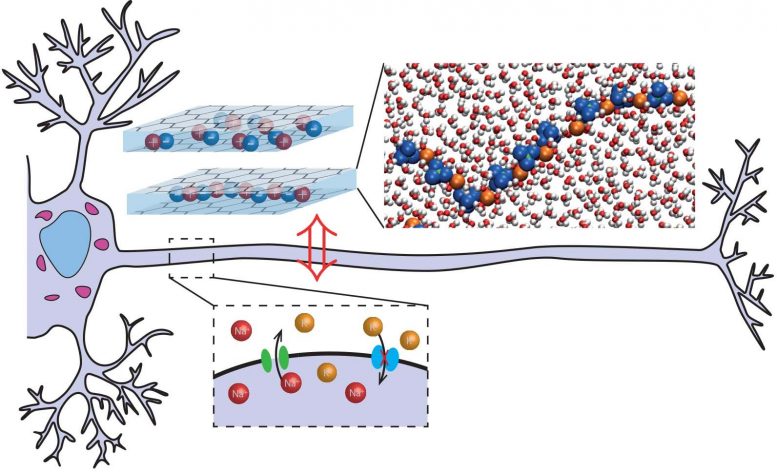
Artificial neuron prototype: nanofluidic slits can play the role of ion channels and allow neurons to communicate. Ion clusters achieve the ion transport that causes this communication. Credit: © Paul Robin, ENS Laboratoire de Physique (CNRS/ENS-PSL/Sorbonne Université/Université de Paris).
Brain-inspired electronics are the subject of intense research. Scientists from CNRS and the Ecole Normale Supérieure – PSL have theorized how to develop artificial neurons using, as nerve cells, ions to carry the information. Their work, published in Science on August 6, 2021, reports that devices made of a single layer of water transporting ions within
The scientists have shown that, under the effect of an electric field, the ions from this layer of water assemble into elongated clusters and develop a property known as the memristor effect: these clusters retain some of the stimuli that have been received in the past. To repeat the comparison with the brain, the graphene slits reproduce the ion channels, clusters and ion flows. And, using theoretical and digital tools, scientists have shown how to assemble these clusters to reproduce the physical mechanism of emission of action potentials, and thus the transmission of information.
This theoretical work continues experimentally within the French team, in collaboration with scientists from the University of Manchester (UK). The goal now is to prove experimentally that such systems can implement simple learning algorithms that can serve as the basis for tomorrow’s electronic memories.
Notes:
1 Recently invented in Manchester by the group of André Geim (Nobel Prize in Physics 2010)
Reference: “Modeling of emergent memory and voltage spiking in ionic transport through angstrom-scale slits” by Paul Robin, Nikita Kavokine and Lydéric Bocquet, 6 August 2021, Science.DOI: 10.1126/science.abf7923